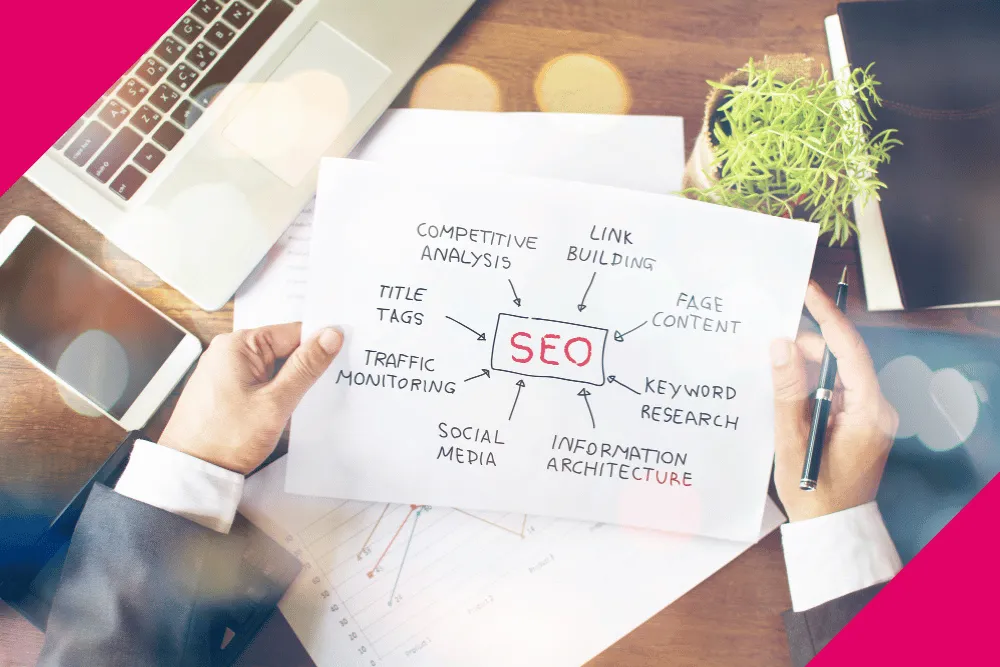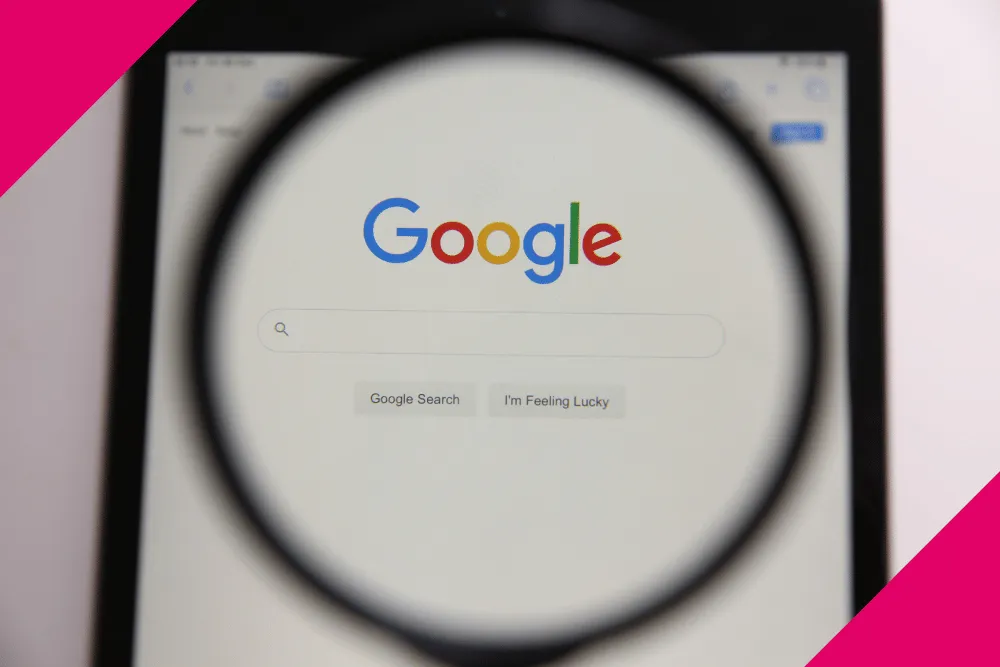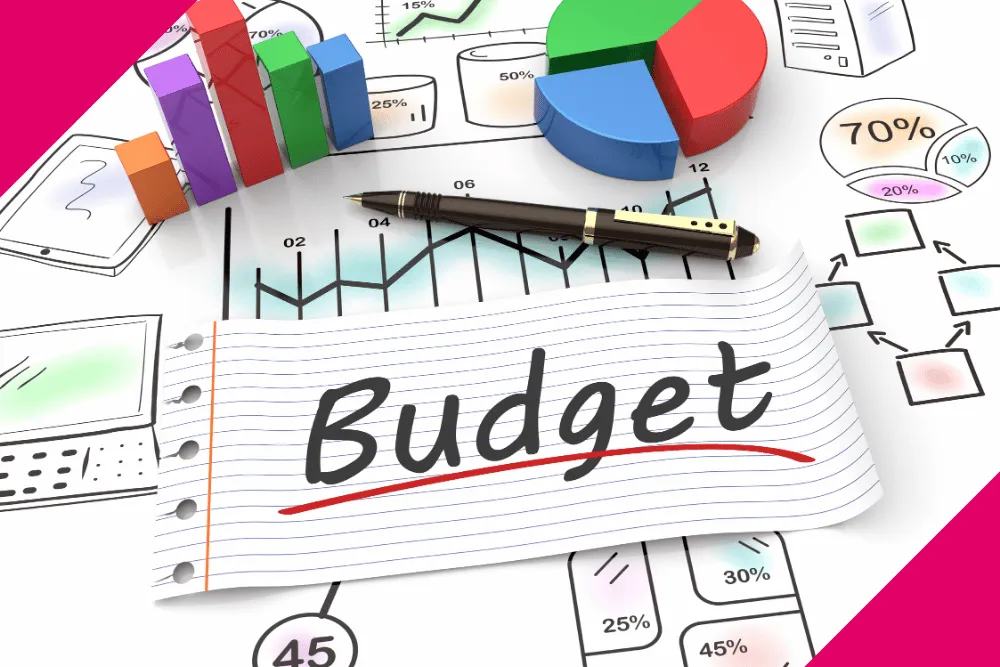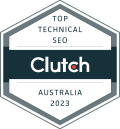Small businesses in Australia often operate with limited marketing budgets, making it crucial to understand how much digital marketing can cost and how to allocate funds effectively. Digital marketing isn’t one-size-fits-all – it encompasses strategies like SEO, PPC advertising, social media marketing, email marketing, and content marketing.
Digital marketing expenditures can vary widely depending on the scope and approach. For instance, one price guide found the average annual digital marketing spend ranged from about AUD $50,000 up to $206,000 for businesses in Australia – a broad range that reflects different business sizes and strategies. Of course, small businesses tend to be on the lower end of that spectrum.
A common rule of thumb is to allocate a percentage of revenue to marketing. Business surveys suggest that B2B companies typically invest around 2–5% of their revenue in marketing, while B2C companies often spend 5–10%. In fact, the average local business puts roughly 5–10% of its revenue into digital marketing efforts.
Industry benchmarks like Gartner’s also recommend around 9% of revenue for marketing budgets. Ultimately, the “right” amount will depend on your growth goals, competition, and what you can afford, but these guidelines offer a starting point.
Search Engine Optimization (SEO) Costs

Search Engine Optimization (SEO) involves improving your website to rank higher on search engines like Google. For small businesses, SEO is a popular digital marketing strategy because it can drive organic (unpaid) traffic over the long term. However, achieving and maintaining good SEO results often requires ongoing effort or professional help, which comes with a cost.
Typical SEO pricing models for small businesses in Australia include:
1. Monthly Retainer Packages:
This is the most common model. For a small business targeting local or niche markets in Australia, monthly SEO services typically cost around $1,500 to $2,500 per month. This usually includes on-page optimisations, local SEO (like Google My Business updates), content improvements, and link-building.
More competitive industries or broader target markets (e.g. nationwide SEO) may require higher budgets (medium-sized businesses often pay $2,000–$5,000/month, and larger enterprises $5,000+.
These retainers fund the ongoing work needed to improve and sustain rankings. Be cautious of ultra-low budget offers – while SEO can technically be as cheap as a few hundred dollars per month, industry experts warn that anything under about $500 per month is unlikely to fund enough work for meaningful results.
2. Hourly SEO Consulting:
If you don’t need full-service SEO, you can hire SEO professionals on an hourly basis for specific tasks or advice. In Australia, SEO specialists charge roughly $80 to $250 per hour depending on their experience and expertise. Freelance consultants might be on the lower end (some as low as ~$80/hour), while agency experts or highly experienced SEOs charge at the higher end.
3. One-off SEO Projects:
Some small businesses opt for a one-time SEO project – for instance, an initial website optimisation or a local SEO setup – and then maintain it themselves. A once-off SEO project in Australia might cost roughly $3,000 to $6,000 for a basic website optimisation, whereas more comprehensive projects (including content creation and link outreach) could range from $5,000 up to $10,000 for a one-time engagement.
This can be a good starting point if your budget is limited, but keep in mind that SEO is an ongoing competition – your site may need continuous work to keep up with competitors.
What influences SEO cost?
Several factors play a role in how much you’ll need to invest in SEO:
1. Competition and Keywords:
If you’re in a competitive industry or targeting high-value keywords (e.g. “Sydney real estate” or “best lawyers in Melbourne”), you’ll likely need a larger budget and more time to see results. Competitive niches often require more content and stronger backlink profiles, which increases cost.
2. Scope (Local vs Global):
Optimising for a local audience (say, a Brisbane plumbing business targeting just one city) is usually cheaper and faster than targeting a national or international audience. Local SEO focuses on things like local directory listings and geo-specific keywords. In contrast, an e-commerce site targeting all of Australia or multiple countries will need a broader SEO strategy (and budget).
3. Content Needs:
Content creation is a significant part of SEO today. If your site needs lots of new content (blog posts, service pages, etc.), factor in the cost of writing or outsourcing that content. High-quality content can be expensive but is crucial for ranking on many keywords.
4. Agency vs Freelancer vs In-House:
Hiring a specialised SEO agency often costs more than using a freelancer or doing it in-house, but a marketing agency brings a team of experts and tools. Agencies in Australia commonly charge $140–$250 per hour if translated from their retainers.
Freelancers or independent consultants might charge, for example, $500 to $2,500 per month on a contract, often making them more affordable for very small businesses.
In-house staff (like a marketing employee who also handles SEO) could be cost-effective if you already have the headcount, but remember to account for the cost of their time and any SEO software subscriptions (SEO tools can run $100+ per month for premium versions).
Pay-Per-Click (PPC) Advertising Costs

Pay-Per-Click (PPC) advertising refers to online ads where you pay each time someone clicks on your ad. The most common platform is Google Ads (formerly AdWords), which shows ads on Google search results and other sites. PPC can yield quick results because your ads can start driving traffic immediately, but the costs can add up quickly since you’re paying for each visitor. For small businesses, PPC is often used to generate leads or sales while SEO and content efforts ramp up.
Typical PPC costs for small businesses in Australia:
1. Ad Spend (Media Budget):
This is the amount you pay to the platform (e.g. Google) for the clicks. A “typical” small business might spend around $2,000 to $5,000 per month on Google Ads, but budgets vary widely. Some local businesses spend just a few hundred dollars a month on highly targeted campaigns, while others in competitive markets might spend $10,000 or more.
A reasonable starting point for many Australian small businesses is in the lower thousands per month, which provides enough data and visibility to gauge performance. You generally have full control over this spend – you can set daily or monthly limits to ensure you don’t exceed your budget.
2. Cost Per Click (CPC):
How far your budget goes depends on the cost per click. Average CPC in Australia can range from relatively cheap to quite expensive depending on your industry. For Google Search ads, small-to-medium businesses often see CPCs roughly between $1 and $25 per click. Less competitive niches (or long-tail keywords) might be only $1–$2 per click, whereas highly competitive sectors (legal, insurance, etc.) can have keywords costing $20+ per click.
For instance, a local café might pay a couple of dollars for a click on “coffee shop Adelaide”, while a law firm might pay $20+ for a click on “personal injury lawyer Sydney”. Display ads (banner ads on websites, or Google Display Network) and social media ads usually have lower CPCs – often well under $1 per click – but they may yield different conversion rates.
Knowing your industry’s CPC range helps in budgeting: if clicks cost ~$2 on average and you budget $1,000, you can expect about 500 clicks (assuming your daily budgets allow it).
3. PPC Management and Fees:
In addition to the ad spend itself, consider whether you’ll manage the campaigns in-house or hire help. PPC, especially Google Ads, has a learning curve – you need to do keyword research, write ads, set bids, and optimize regularly. Many small businesses choose to hire a freelancer or agency to manage their PPC campaigns.
Agencies or PPC specialists typically charge either a flat monthly fee or a percentage of your ad spend. For small budgets, flat fees might range from a few hundred dollars up to $1,000+ per month for management.
On average, agencies might charge about USD $250 to $1,500 per month (approximately AUD $350 to $2,000) for PPC management for small to mid-sized businesses, depending on the scope and spend. Some agencies use a percentage model (e.g. 10-20% of ad spend).
Factors affecting PPC cost:
1. Industry Competition:
As mentioned, the more competitive your industry’s keywords, the higher the cost. Legal, finance, trades, and some B2B services often have higher CPCs in Australia, whereas niche local businesses might have it cheaper.
2. Quality and Relevance:
Platforms like Google reward well-run campaigns. A highly relevant ad with a good Quality Score can actually lower your cost per click compared to a poorly targeted ad. So, investing in good copy and targeting can stretch your budget further.
3. Geographic Targeting:
If you target broad regions (e.g. all of Australia) you may spend more than targeting a specific city or radius. Small businesses typically focus on their service areas to avoid wasting budget on irrelevant clicks.
4. Ad Platforms:
Google Search is just one avenue. Bing Ads (Microsoft Advertising) is smaller in market share but sometimes cheaper per click and could be considered as well. Additionally, remarketing ads (showing ads to people who visited your site) often have different cost dynamics and can be cost-effective.
Social Media Marketing Costs
Social media marketing encompasses both organic social media management (creating content and engaging with followers on platforms like Facebook, Instagram, LinkedIn, etc.) and paid social media advertising. Small businesses in Australia often use a mix of both – for example, maintaining a Facebook page and running some paid ads to boost their reach. Costs in this area can vary depending on whether you do it yourself or hire someone, and how much you spend on ads.
Cost breakdown for social media marketing:
1. Organic Social Media Management:
Managing social media accounts in-house can be cost-effective but remember that it requires time and consistency. The direct monetary cost if you do it yourself is low (aside from perhaps design tools or scheduling software), but you might spend several hours per week on content creation, responding to comments, and planning posts.
2. Social Media Advertising:
Paid ads on social platforms (like Facebook Ads, Instagram Ads, LinkedIn Ads, Twitter Ads) allow you to reach a wider or more targeted audience beyond your followers. The cost of social media ads is generally lower per click than Google search ads, though it varies by platform and targeting.
In Australia, Facebook and Instagram advertising might cost around $0.50 to $2.00 per click on average for many industries, but could range higher up to $5 or $6 in more competitive targeting scenarios.
Social platforms often charge by CPM (cost per thousand impressions) as well; a typical CPM might be in the range of $5–$15, meaning $5–$15 to show your ad 1,000 times (again dependent on audience targeting). A small business can start with a modest social ad budget – even a few hundred dollars a month can be used for boosted posts or basic campaigns.
Industry data suggests social media marketing campaigns can cost between $1,000 and $20,000 per month depending on scope, but the low end of that spectrum is more typical for a local small business.
3. Content Creation for Social:
One often overlooked cost is creating the actual content (graphics, videos, captions) for social media. If you have the skills in-house, you might use your time to create posts. If not, you might hire a graphic designer for images or a copywriter for crafting the posts.
Some social media packages include content creation in their fee, while in other cases you might pay separately for, say, a photographer to take product photos or a designer to make infographics. As a ballpark, a freelance designer might charge $50-$100 per social media graphic, and a photographer could charge a few hundred dollars for a session to build up a content library.
Factors affecting social media marketing cost:
1. Number of Platforms:
Managing one platform (say, just Facebook) generally costs less than trying to maintain a presence on 3 or 4 platforms. Each additional platform means more content and potentially different strategies (LinkedIn content might differ from Instagram content, for example).
2. Paid vs Organic Balance:
Some businesses mainly invest in organic efforts (time spent posting and engaging) which is more of a fixed labor cost, while others put more into paid ads. Often a combination is best: regular organic posts to keep your page active and build brand, plus paid ads to reach new people or drive specific campaigns.
3. Outsourced Expertise:
If you hire a highly experienced social media strategist or a larger agency, expect higher fees than a newcomer freelancer. The upside is usually more strategic insight and experience that could improve results.
Email Marketing Costs
Email marketing is one of the most cost-effective digital marketing strategies available. It involves sending newsletters, promotional emails, or automated drip campaigns to a list of subscribers (customers, prospects, etc.). For small businesses, email marketing can be a great way to nurture customer relationships and drive repeat business at a relatively low cost. The primary costs associated with email marketing are the software/service you use to send emails and the time or resources needed to create the emails.
Email marketing costs for small businesses:
1. Email Marketing Software:
There are many email service providers (ESPs) like Mailchimp, Campaign Monitor, SendinBlue, Constant Contact, and others. Most operate on a subscription model that scales with the size of your email list.
For example, Mailchimp offers a free plan for up to 500 contacts, and then paid plans might start around ~$20 AUD per month for 500–1,000 contacts (the price increases as your list grows or as you need more advanced features).
2. Content Creation and Management:
Writing and designing emails can be done in-house or outsourced. If you or someone on your team is handling it, the monetary cost is low, but consider the time spent to craft good content. Outsourcing email content could mean hiring a freelance copywriter or an agency to manage your email campaigns. Some small businesses engage freelancers to write a monthly newsletter or a series of automated emails.
Freelance email copywriting might cost anywhere from $100 to $500 per email campaign, depending on length and complexity. You might also need a designer if you want custom email templates (though many ESPs provide templates).
3. List Building Costs:
While not a direct “email marketing” cost, consider if you invest in growing your email list. This could include costs like running lead generation ads on Facebook to collect sign-ups, offering a small discount (which is a cost in terms of margin) for new email subscribers, or using a tool at point-of-sale to gather customer emails.
List building often ties into other marketing costs, but it’s worth noting as an indirect cost to make your email marketing successful.
Content Marketing Costs

Content marketing involves creating and sharing valuable content (blog articles, videos, infographics, ebooks, etc.) to attract and retain customers. It overlaps with SEO (since content is what often ranks in search engines) and with social media (as you need content to post).
For small businesses, content marketing is a way to build authority and organic traffic without paying for every click, but it does require investment in content creation.
The cost of content marketing
1. Blog Posts and Articles:
Blogging is a cornerstone of content marketing for many businesses. If you or someone in your team enjoys writing, you might handle this in-house, making the out-of-pocket cost low (just the time spent).
However, quality content writing is time-consuming. Many small businesses outsource blog writing to freelance writers or content agencies. Typical rates for freelance writers in Australia can range from $0.10 to $0.30 per word for competent writers.
2. Video Content:
Video is engaging but can be more expensive to produce than text. A small business might start with DIY videos (shot on a smartphone, edited with basic software) which mainly cost time.
But for polished video content – say, a promotional brand video or a series of customer testimonial videos – you might hire a videographer. Professional video production costs can range widely. A simple 1-2 minute promotional video might cost $1,000–$5,000 when done professionally (including planning, shooting, editing), depending on the complexity.
3. Infographics and Visuals:
If your industry lends itself to infographics or custom imagery, you might invest in graphic design.
Freelance designers might create an infographic for a few hundred dollars each, depending on the research and design involved. There are also online tools to create your own infographics at lower cost if you have the time.
4. Content Strategy and Promotion:
Sometimes the cost in content marketing isn’t just making the content, but also strategizing and distributing it. An agency might charge a consulting fee to develop a content strategy or editorial calendar for you.
Additionally, you might spend some budget on promoting the content – for example, a few hundred dollars to boost a key blog post on social media, or using an content discovery network (like Outbrain/Taboola) to get more eyes on your articles. These promotional costs overlap with advertising budgets.
It’s reported that overall content marketing spending can range anywhere from$1,000 up to $20,000+ per month for businesses, considering all the moving parts. Small businesses obviously would lean toward the lower end of that.
You can start small – maybe a budget of $500-$1,000 for a couple of well-written blog posts and some graphics each month – and increase as you see content driving traffic or as you have more resources.
Planning Your Digital Marketing Budget (Recommendations)
With multiple channels (SEO, PPC, social, email, content) vying for your marketing dollars, how should a small business in Australia allocate their digital marketing budget? The optimal mix will depend on your specific business and goals.
Budget planning recommendations and industry benchmarks to consider:
1. Follow the Percentage-of-Revenue Guideline:
A common recommendation is to allocate around 7-10% of your revenue to marketing if you are aiming for growth (closer to 5% if you want to maintain your current level, and up to 10% or more for aggressive growth).
For example, if your business makes $500,000 in annual revenue, a 7% marketing budget would be $35,000/year (about $2,900/month). Very small businesses or startups with growth ambitions might even momentarily exceed this percentage – investing 10% or more of revenue – to jump-start their digital presence (Local Digital).
2. Allocate Budget Based on Your Audience and Goals:
Not all channels are equal for every business. If you run an online store, you might allocate more to PPC and social ads to drive immediate e-commerce sales, plus some to SEO for long-term organic traffic.
A local service business (like a home contractor) might invest heavily in SEO and content marketing to rank for local searches, use PPC in a targeted way (e.g. Google Ads for “emergency plumber [city]”), and allocate a smaller portion to social media mainly for reputation and engagement.
3. Start with the Low-Hanging Fruit:
Generally, it’s wise to secure the basics first. Ensure your website is optimized (basic SEO and good content, which might require some upfront spend).
Make sure you have at least one or two active social profiles for credibility (even if you’re not pouring money into them). Claim your Google My Business listing (free) for local search visibility.
4. Be Prepared to Adjust and Experiment:
The beauty of digital marketing is the ability to track and measure almost everything. Allocate, say, a small portion of your budget (maybe 10-15%) as an experimental fund. Try a new channel or a new campaign idea.
For instance, if you’ve never done LinkedIn ads and you sell B2B services, try a short campaign with a small budget. Or experiment with a new type of content (maybe start a podcast or a YouTube channel on a shoestring to see if it gains traction).
5. Use Industry Averages as a Benchmark, Not a Rule:
We’ve shared a lot of industry average cost ranges (e.g. typical SEO cost, average PPC spend). Use these to sanity-check your plans. If an agency quotes you far outside these ranges without a clear reason, ask questions. However, also remember every business is unique.
Maybe you can thrive with below-average spend because you’re in a niche with little competition, or maybe you need above-average spend because you’re in a crowded market.
Track your own metrics (cost per lead, customer acquisition cost, ROI per channel) – over time, your data will tell you where to cut and where to spend more.
6. ROI and Lifetime Value Consideration:
When deciding on budget, consider the lifetime value of a customer for you. If you run a subscription-based service where a customer stays for a year at $50/month, that customer is worth $600. You might be willing to spend $100 or even $200 to acquire one via PPC or SEO because you’ll still come out ahead.
In contrast, if you sell a one-off product for $30 with thin margins, you need very low-cost marketing methods (like perhaps organic social and content) to make it profitable.
Conclusion
Digital marketing offers small businesses in Australia an array of strategies to reach customers online, but each comes with its own costs. From ongoing SEO retainers to per-click ad charges, from the man-hours behind social media posts to the subscription fee of an email platform, it’s important to account for all these components in your marketing budget.
The good news is that digital marketing is highly scalable – you can start with a modest budget, prioritising the tactics likely to drive the most impact for your business, and grow your investment as you start seeing returns.
Keep in mind that an effective digital marketing plan often blends multiple channels. For example, you might use content and SEO to draw in people researching your product/service, PPC to capture those ready to buy now, social media to engage and build brand awareness, and email to retain and upsell to existing customers. By understanding the cost breakdown of each strategy, you can allocate your budget in a way that aligns with your business goals and customer behaviour.



